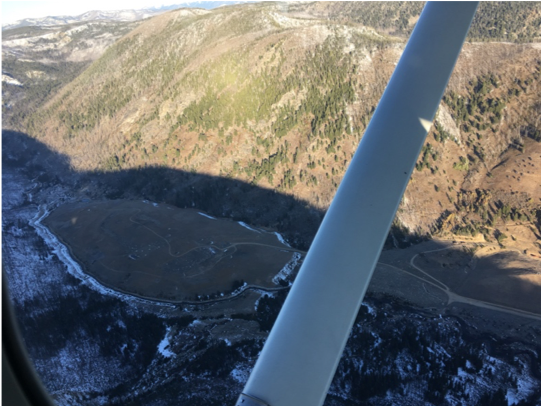Idaho’s Salmon River – known as the River of No Return – is one of the longest undammed rivers remaining in the U.S. – providing cold clean water and critical habitat for wild salmon. Midas Gold, a Canadian mining company, proposes to mine for gold on federal public lands at the headwaters of the Salmon. I recently flew over the proposed mine site to get an eagle-eye view of the landscape.
Restoration Project or Mining Project?
The proposed mine is located in an area that was previously mined by a number of mining companies, many of which left a mess behind. Over the years, the EPA and Forest Service invested millions in restoration and clean-up of these past operations.

Midas proposes to re-mine the old mine waste and clean-up the pollution of the past before it expands into new operations. While I appreciate the idea behind the proposal, and recognize that it is beneficial to reduce the demands for new mining by re-mining old waste, I remain deeply concerned about this project because re-mining is actually just a small part of the operation. Ultimately, this is a proposal for a cyanide leach gold mine and a big one.
The proposed plan involves vastly more mining activity, creating three large open pits, and more than doubling the size of the impacts on federal lands to 1,000 acres. The company will extract 100 million tons of ore, and produce 450 million tons of mine waste. The mine waste will fill three valleys and displace the rivers and streams that flow through them.
One of the open pits would be dug in Meadow Creek, an area that has already been reclaimed and restored by the Forest Service and EPA, and currently provides productive spawning habitat for threatened fish.
Their plan also involves an audacious proposal to divert the headwaters of the Salmon river into a tunnel – almost a mile long – to route it away from the mine’s proposed open pit. In a recent news story, regional Nez Perce fisheries biologist, Wes Keller, says the plan is dubious, and “never been done.”
There’s a lot that can go wrong with cyanide leach gold mining, let alone plans for re-routing a river. Open-pit, cyanide leach mining has been banned in the neighboring state of Montana since 1998 after gold mines there caused repeated pollution to important water supplies.
Opposition to the Mine
The proposed Stibnite Mine is located within the Nez Perce Tribe’s aboriginal territory. After dealing with decades of pollution from previous mining operations, the Tribe passed a resolution in 2018 opposing the new proposal because it “poses a threat to the Tribe’s Treaty-reserved resources and the livelihood, health and socio-economic well-being of the Nez Perce Tribal members and surrounding communities.”
“Midas Gold claims its mine will restore the damage done by previous mining in the area. However, the mine Midas Gold is proposing will be far larger than previous mines at the site. And, gold mining, by its very nature, destroys and contaminates resources and habitat—resources and habitat that the Tribe heavily relies on and is currently working to restore. The Tribe, the United States, and the state of Idaho have already poured millions of dollars into restoring this area. Allowing Midas Gold to move forward with their proposed mine will undo the hard work of so many. We have yet to see a mine that does more good than harm and it is our responsibility to look out for our future generations.” – Nez Perce Tribal Chairman Wheeler in a 2018 press release.
As we fly over the South Fork of the Salmon River, it’s easy to see why the river is valued so highly and concerns over the proposed mine are paramount.
What’s Next?
After multiple delays, the draft environmental review for the proposed mine is expected in December. Earthworks is also working with a grassroots group of concerned citizens in McCall Idaho, and we’ll be reviewing the Draft EIS and drafting comments, so stay tuned.
Click here to get the latest about the project from the Forest Service.

